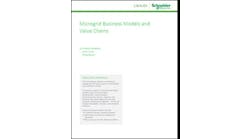Credit: Ian Sane
Local energy is a term in search of a definition. Sometimes it’s a microgrids, sometimes community solar, sometimes a town or city buying its own power.
Now in New York, a state exploring disruptive energy’s cutting edge, the three come together under a model being planned by Joule Assets and Good Energy.
The partnership wants to help communities marry microgrids, community solar and community choice aggregations (where a community contracts on its own for energy supply rather than relying on a utility.)
Glenn Weinberg, Joule Assets manager of special projects, calls the model the “triple threat — a real new community energy paradigm.”
The idea emerged out of the state’s Reforming the Energy Vision, New York’s policy that upends the conventional utility industry by creating a decentralized energy market.
Community choice aggregations, microgrids and community solar already are being used in various communities — but separately. Bringing them together creates a kind of whole that is greater than the sum of its parts. It offers low-cost power, green energy and high reliability.
“The value of each is dynamically enhanced by the other,” Weinberg said in an interview last week.
Pairing microgrids and community solar
By forming an aggregation, a community can secure its own power and not rely on the local utility.
Part of that mix can be community solar (aka solar gardens), an approach that creates a communal solar array so that participants can gain value from green energy, even if they don’t have solar panels on their own roofs. Community members subscribe to the solar project and receive equity ownership.
By adding a microgrid, suddenly the solar power isn’t only green, but also highly reliable. If the central grid fails — and the community can’t access the retail power it is buying — it can turn to its solar installation. Absent the microgrid, the community solar project is unable to provide back-up supply when the grid goes down.
The concept springs out of efforts by Joule Assets CEO Mike Gordon to spur community aggregations in his home town. He has been working with several Westchester County communities that plan to form a buying group.
Under the name Sustainable Westchester, the group has asked New York regulators to approve a demonstration project to test the combination of group energy buys, microgrids and community solar — what it calls ‘the community energy paradigm.’
“Microgrids make ideal sites for shared renewables. A microgrid gives the host the flexibility to sell excess power during normal grid conditions, and distribute power to loads within the microgrid, when in islanding mode,” said Sustainable Westchester in a filing before the Public Service Commission.
The approach also includes distributed demand side energy resources, such as automated demand response, dynamically controlled LED street lighting, and community-scale residential smart thermostat programs.
Along with Bedford 2020, a non-profit working on greenhouse gas reductions, Sustainable Westchester wants to build 10 MW of community solar, divided into five 2 MW projects across the county.
The program is closely linked to the state-sponsored NY Prize, the $40 million contest sponsored by the state to encourage microgrid development. Sustainable Westchester communities won 10 of 83 prizes in July to conduct microgrid feasibility studies. Each community receives $100,000. The state plans to offer additional prizes for design and construction in two upcoming NY Prize rounds.
Blue print for other communities
Joule Assets and Good Energy plan to bring the Sustainable Westchester blueprint to other cities and towns throughout New York. Joule Assets offers its expertise financing energy efficiency and demand management, and Good Energy, its experience as an energy aggregation consultant.
The partnership sees opportunity not only for communities that win NY Prize money, but also — and perhaps more importantly — for those who don’t.
Only a handful of the 83 microgrids now conducting feasibility studies will win money toward construction. But the state will already have set them on path toward financing a microgrid with the studies and in some cases even a design in place.
“Those municipalities are going to need help accessing financing. Joule is absolutely pursuing those opportunities,” Weinberg said.
Adding a microgrid to community solar makes the project more financially attractive to developers and investors, according to Sustainable Westchester’s filing.
RFP for retail supply
The community plans to issue a request for proposals for retail energy supply in September or October. The group expects to seek enough power for about 75,000 households, according to Weinberg.
Bids must be priced below utility rates. The RFP will probably ask for both “light” or “deep” green options (50 percent or 100 percent renewables). The criteria will suit large, credit-worthy retail suppliers, particularly those with experience working with aggregations, he said.
New York is the seventh state in the country to allow residents within a city or municipality to form energy buying groups that seek power from competitive retail suppliers. Massachusetts, Ohio, Illinois, and California already have large-scale electricity aggregations.
“Commercial energy consumers have realized the benefits of competitive energy markets, but residential consumers are underserved in deregulated states,” said Javier Barrios, managing partner of Good Energy and Northeast President of The Energy Professionals Association (TEPA). “This type of collective purchasing program offers another choice for residents. Now, residential energy consumers can band together, create an economy of scale, and save money.”
Comment on this article on MicrogridKnowledge.com, or by joining our LinkedIn Group, Community Microgrids and Local Energy.







